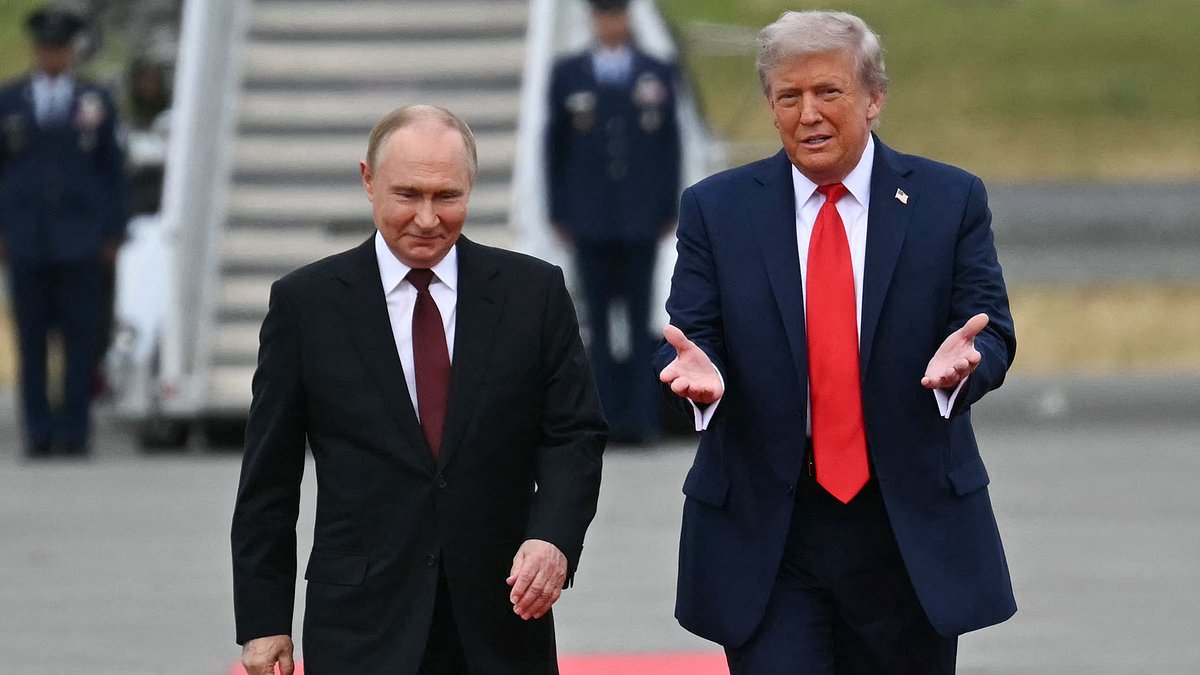As Vladimir Putin heads back to Moscow, the Russian president can likely take some quiet satisfaction from his recent trip to Alaska.
While the summit with former US President Donald Trump may have yielded few concrete agreements, Putin achieved his immediate goal: breaking through diplomatic isolation and asserting psychological influence over Trump.
Trump’s Warm Reception Surprises Observers
Observers noted that Trump greeted Putin with a broad, friendly smile—more like hosting an old ally than confronting a leader whose forces have repeatedly threatened nuclear escalation and whose historical outlook casts the US and UK as adversaries.
With additional sanctions looming over Russia, this engagement gave Putin a valuable opportunity to re-establish dialogue with a key American figure while temporarily freezing punitive measures.
Strategic Goals Behind the Summit
Though no major deals were struck, Putin leaves Alaska with his military operations in Ukraine continuing and sanctions temporarily deferred.
His long-term aim appears to be forcing a humiliating peace on Kyiv, fracturing Ukrainian social cohesion, and using non-military tactics to weaken the country further.
According to Kremlin strategy, ceasefires and negotiations serve as psychological tools to divide and destabilize opponents, rather than genuine paths to peace.
China’s Role and Europe’s Shortcomings
Meanwhile, China strengthens its influence over Russia by purchasing discounted energy, benefiting from the continuation of the war.
European nations, meanwhile, find themselves sidelined—poorly led, divided, and incapable of effectively supporting Ukraine or defending themselves.
This situation aligns closely with Putin’s narrative of Western weakness.
The Risks for Trump and the West
Some analysts suggest that Donald Trump, despite his genuine desire for peace, risks becoming a tool for Putin’s strategic goals.
His actions could inadvertently undermine Western cohesion and democracy’s moral authority.
In response, Germany, France, and the UK convened via phone to discuss potential security guarantees if a deal were reached, signaling the continuing importance of allied coordination.
Zelensky Faces an Impossible Choice
Tomorrow, Trump is scheduled to meet President Volodymyr Zelensky in Washington to present a “peace” plan likely requiring significant Ukrainian territorial concessions—something Zelensky has stated is unacceptable and which could threaten national unity.
At the same time, Moscow is experiencing economic pressures that might make negotiation more appealing, but Putin’s demands may remain too extreme for Ukraine to accept.
The Path Forward Remains Uncertain
The world waits to see whether a deal can be forged or if the conflict—the deadliest in Europe since World War II—will continue to claim thousands more lives.
For now, the Alaska summit highlights the complex interplay of diplomacy, strategy, and human cost that defines this ongoing crisis.



